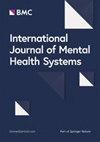Detecting child sexual abuse in child and adolescent psychiatry: a survey study of healthcare professionals’ assessment practice
IF 3.8
2区 医学
Q2 PSYCHIATRY
引用次数: 0
Abstract
Research shows that only around half of all survivors of child sexual abuse (CSA) disclose the abuse during childhood and adolescence. This is worrying, as CSA is related to substantial suffering later in life. The proportion of children and adolescents who have been exposed to CSA is significantly higher in Child and Adolescent Psychiatry (CAP) than in the general population. Healthcare professionals report that uncovering CSA is a complex and challenging task. However, we know little about how they proceed when uncovering CSA. More knowledge of healthcare personnel’s experience is therefore necessary to facilitate and increase CSA disclosure. The study aims to explore how CAP healthcare professionals in Norway proceed when assessing and detecting CSA, how they experience this work, and what hinders or facilitates their efforts. The study employed a mixed method approach. Data was collected through an anonymous online survey, generating both quantitative and qualitative data. The sample consisted of 111 healthcare professionals in CAP, of whom 84% were women, with a mean age of 40.7 years (range 24–72; sd = 10.8). Mean years of CAP clinical experience were 8.3 years (range 0–41; sd = 7.5). The quantitative data was analysed using descriptive statistics, correlations, and independent sample t-tests, while the qualitative data was analysed using a team-based qualitative content analysis. The results showed that detection of CSA was viewed as an important, but complex task in CAP, and the existing procedures were deemed to be insufficient. The therapists mostly felt confident about how to proceed when they suspected or detected CSA, yet they seldom detected CSA. In their initial assessment they applied standardised procedures, but if their suspicion of possible CSA persisted, they seemed to rely more on clinical judgement. Specific challenges and facilitators for CSA detection were identified, both in the individual and in the organisation. The study highlights the challenges and complexities healthcare professionals and the CAP system face when assessing CSA, which may account for the low detection rate. The results show that healthcare professionals believe room for clinical autonomy and targeted competence development may improve CSA detection. Additionally, the findings suggest a need for CAP to define roles and responsibilities within and between agencies.儿童与青少年精神病学中的儿童性虐待检测:医护人员评估实践调查研究
研究表明,在所有儿童性虐待(CSA)幸存者中,只有大约一半的人披露了童年和青少年时期遭受的虐待。这种情况令人担忧,因为儿童性虐待与日后生活中的巨大痛苦有关。在儿童和青少年精神病学(CAP)中,遭受过 CSA 的儿童和青少年比例明显高于普通人群。医疗保健专业人员表示,揭露 CSA 是一项复杂而具有挑战性的任务。然而,我们对他们在揭露 CSA 时是如何进行的却知之甚少。因此,有必要更多地了解医护人员的经验,以促进和增加 CSA 的披露。本研究旨在探讨挪威的CAP医护人员在评估和检测CSA时是如何开展工作的,他们是如何体验这项工作的,以及哪些因素阻碍或促进了他们的工作。研究采用了混合方法。通过匿名在线调查收集数据,同时生成定量和定性数据。样本包括 111 名 CAP 医护人员,其中 84% 为女性,平均年龄为 40.7 岁(24-72 岁不等;sd = 10.8)。从事 CAP 临床工作的平均年限为 8.3 年(0-41 年不等;sd = 7.5)。定量数据采用描述性统计、相关性和独立样本 t 检验进行分析,定性数据则采用基于团队的定性内容分析进行分析。结果表明,在 CAP 中,发现 CSA 被视为一项重要但复杂的任务,而现有的程序被认为是不够的。治疗师们大多对怀疑或发现 CSA 时的处理方法很有信心,但他们很少发现 CSA。在最初的评估中,他们采用了标准化程序,但如果他们持续怀疑可能存在 CSA,他们似乎更依赖于临床判断。研究发现了个人和组织在发现 CSA 方面所面临的具体挑战和促进因素。研究强调了医护专业人员和 CAP 系统在评估 CSA 时所面临的挑战和复杂性,这可能是检测率低的原因。研究结果表明,医护人员认为临床自主空间和有针对性的能力发展可提高 CSA 的检测率。此外,研究结果还表明,CAP 需要明确机构内部和机构之间的角色和职责。
本文章由计算机程序翻译,如有差异,请以英文原文为准。
求助全文
约1分钟内获得全文
求助全文
来源期刊

International Journal of Mental Health Systems
PSYCHIATRY-
CiteScore
6.90
自引率
2.80%
发文量
52
审稿时长
13 weeks
 求助内容:
求助内容: 应助结果提醒方式:
应助结果提醒方式:


